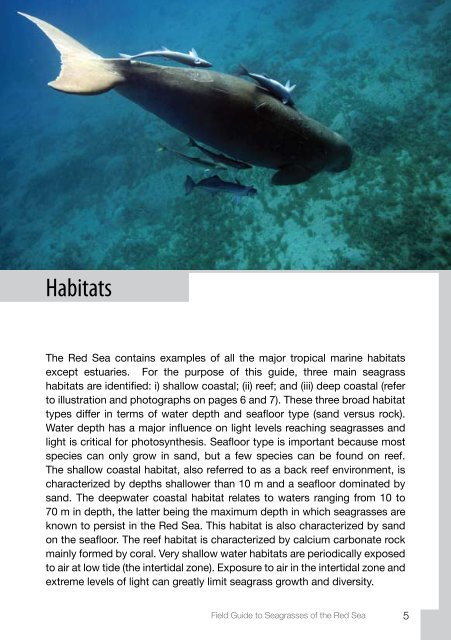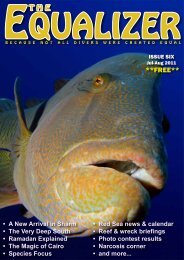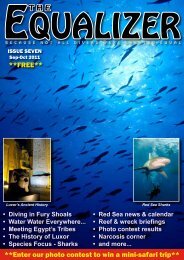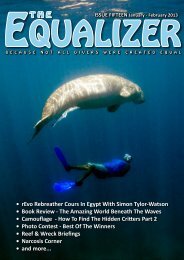Field Guide to Seagrasses of the Red Sea - Seagrass-Watch
Field Guide to Seagrasses of the Red Sea - Seagrass-Watch
Field Guide to Seagrasses of the Red Sea - Seagrass-Watch
You also want an ePaper? Increase the reach of your titles
YUMPU automatically turns print PDFs into web optimized ePapers that Google loves.
Habitats<br />
The <strong>Red</strong> <strong>Sea</strong> contains examples <strong>of</strong> all <strong>the</strong> major tropical marine habitats<br />
except estuaries. For <strong>the</strong> purpose <strong>of</strong> this guide, three main seagrass<br />
habitats are identified: i) shallow coastal; (ii) reef; and (iii) deep coastal (refer<br />
<strong>to</strong> illustration and pho<strong>to</strong>graphs on pages 6 and 7). These three broad habitat<br />
types differ in terms <strong>of</strong> water depth and seafloor type (sand versus rock).<br />
Water depth has a major influence on light levels reaching seagrasses and<br />
light is critical for pho<strong>to</strong>syn<strong>the</strong>sis. <strong>Sea</strong>floor type is important because most<br />
species can only grow in sand, but a few species can be found on reef.<br />
The shallow coastal habitat, also referred <strong>to</strong> as a back reef environment, is<br />
characterized by depths shallower than 10 m and a seafloor dominated by<br />
sand. The deepwater coastal habitat relates <strong>to</strong> waters ranging from 10 <strong>to</strong><br />
70 m in depth, <strong>the</strong> latter being <strong>the</strong> maximum depth in which seagrasses are<br />
known <strong>to</strong> persist in <strong>the</strong> <strong>Red</strong> <strong>Sea</strong>. This habitat is also characterized by sand<br />
on <strong>the</strong> seafloor. The reef habitat is characterized by calcium carbonate rock<br />
mainly formed by coral. Very shallow water habitats are periodically exposed<br />
<strong>to</strong> air at low tide (<strong>the</strong> intertidal zone). Exposure <strong>to</strong> air in <strong>the</strong> intertidal zone and<br />
extreme levels <strong>of</strong> light can greatly limit seagrass growth and diversity.<br />
<strong>Field</strong> <strong>Guide</strong> <strong>to</strong> <strong><strong>Sea</strong>grasses</strong> <strong>of</strong> <strong>the</strong> <strong>Red</strong> <strong>Sea</strong> 5





